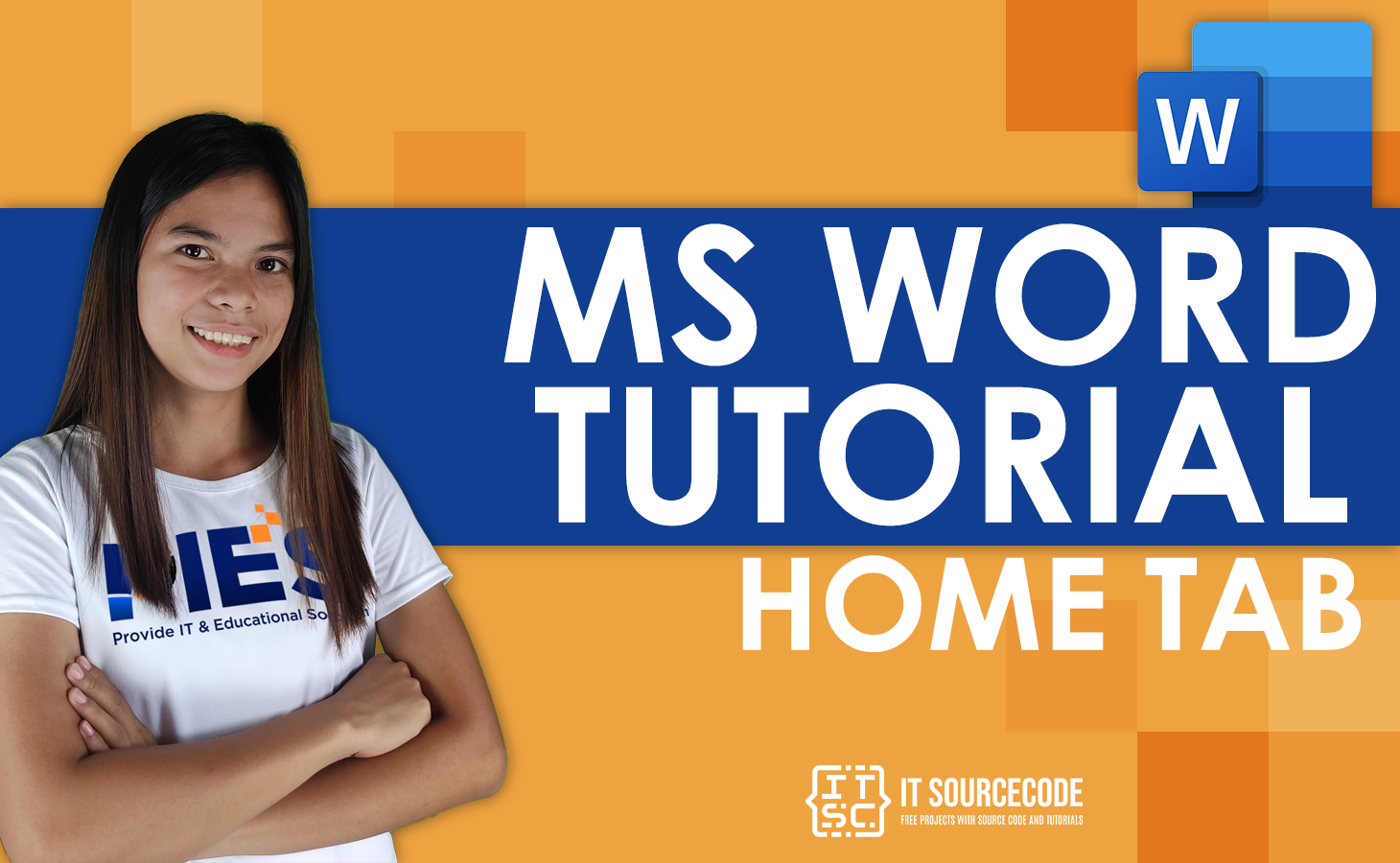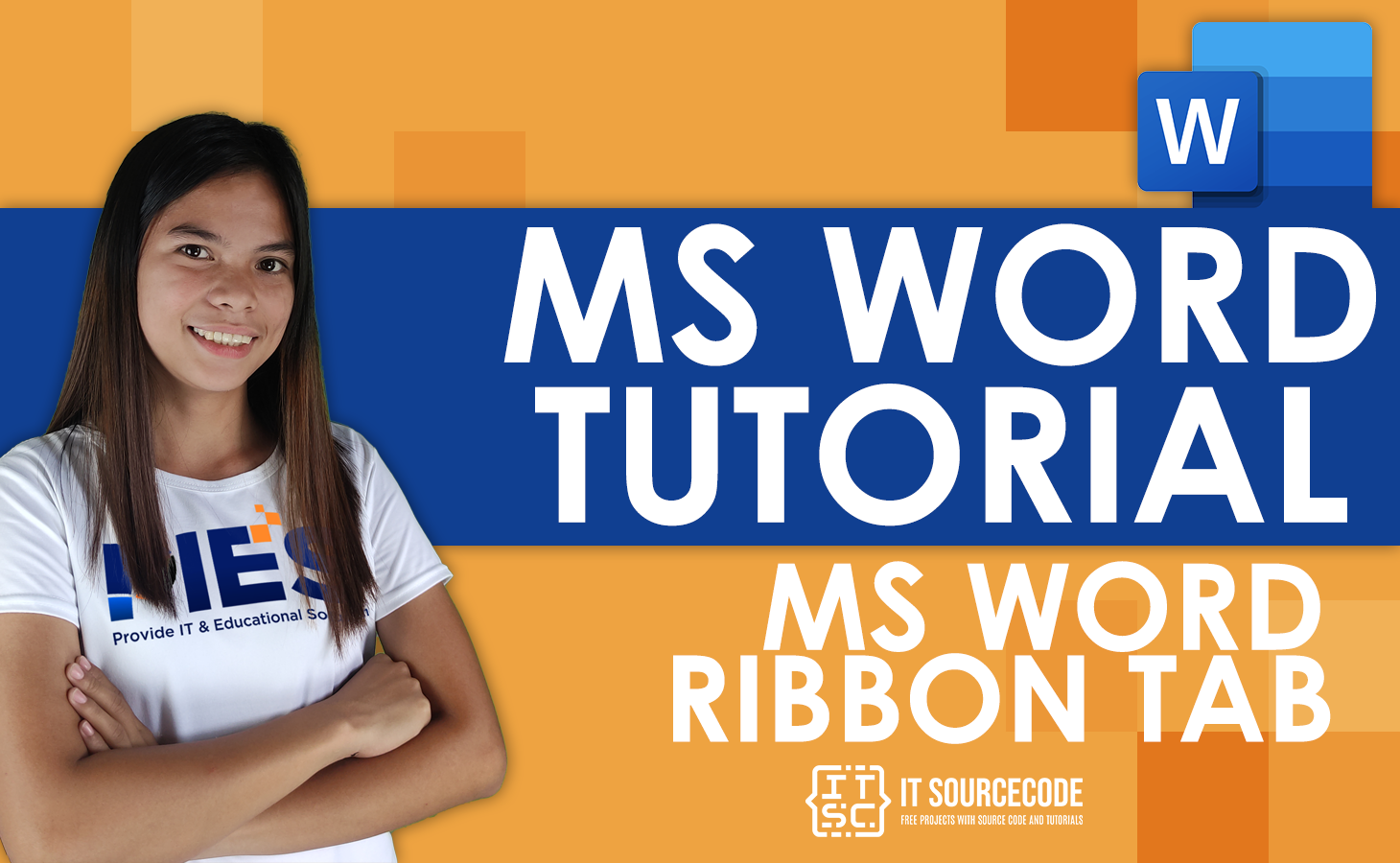In this lesson, you will learn How To Use Home Tab Options In MS Word. This lesson will discuss the groups and commands available in home tab in creating word document.
Meanwhile, this is a continuation of the previous tutorial on what is MS Word ribbon and the different types of tabs in Microsoft Word, both of which are still basic components of MS Word. You can browse those guides if you are having a hard time exploring your documents.
What is Home tab in MS Word?
The Home Tab in MS Word is where you can find basic information about how text looks when it’s printed or shown online. It lets you use both direct formatting and formatting based on styles. Styles take up a lot of space in Word because they are such an important part of using it well.
The home tab is a tab or button in an in Word that takes you back to the main page. It is the default tab in Microsoft Word, Excel, PowerPoint, and other Microsoft Office programs.
Table of contents
How many groups are in the home tab of MS Word?
The Home tab of MS Word has five groups: Clipboard, Font, Paragraph, Styles, and Editing. A dialog box is opened when you click on the arrow in the bottom corner of a group. The dialog box gives more options and commands to format documents in one given area.
Home Tab in MS Word Features
The Microsoft Word Home tab provides many features to users, including the following.
- Change the size, type, and color of the font.
- You can make text bold or italic.
- Add or take away the color around the text that stands out.
- Text on a page can be aligned to the left, center, or right.
- Add lists with bullet points or numbers.
- Change the space between lines and paragraphs.
- Change the amount of space between lines of text.
- Text, text boxes, and tables can have borders added, changed, or taken away.
- Add or modify heading types.
- Insert a horizontal line.
- Find or switch out text.
Shortcut Keys of MS Word Home Tab
Home tab in MS Word Use this keyboard shortcut: Alt+H to see the keyboard shortcuts for items. When the button is pressed, the keys to press for each item in the Home tab are shown, as shown in the picture below.

What are the Parts of Home tab in MS Word?
The home tab contains various items that you may want to use in creating a document. These items include clipboards, fonts, paragraphs, styles, and editing.

Clipboard of MS Word Home Tab
The clipboard group can be found on the far left side of the MS Word Home Tab. It is frequently used in conjunction with the editing group, which is located on the far right side of the tab.
Clicking on the dialog launcher in the bottom right corner of this group brings up the Clipboard task pane quickly.
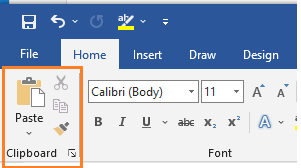
Command Button of MS Word Home Tab Clipboard
Here are the available commands buttons in MS Word Home Tab Clipboard
- Paste – Button with Drop-Down. The drop-down contains the commands: Paste, Paste Special and Paste as Hyperlink.
- Cut – (Ctrl + X). Cuts the current selection to the clipboard.
- Copy – (Ctrl + C). Copies the current selection to the clipboard.
- Format Painter – (Ctrl + Shift + C). Copies the formatting from one place in a document and lets you apply it somewhere else. This works across multiple documents.
Font Group of MS Word Home Tab
The Font Group of the MS Word Home Tab contains all of the character formatting commands. By clicking the dialog box launcher in the bottom right corner of this group, you can quickly display the “Font” dialog box.

Command of MS Word Home Tab Font
Here are the command buttons available in MS Word Home Tab Font.
- Font – Contains a listing of all available fonts.
- Reduce Font Size – Reduces the current selection’s font size to the next smaller size in the Font Size box.
- Increase Font Size – Increases the current selection’s font size to the next larger size listed in the Font Size box.
- Replace Case – Changes the selected text to uppercase, lowercase, or another capitalization style.
- Clear Formatting – Removes all formatting from the selected text.
- Italics – Toggles the current selection’s bold attribute.
- Underline – Buttons with Drop-Down functionality. The button toggles bold formatting for the selected text.
- Strikethrough – Creates a vertical line through the selected text.
- Subscript – Changes the selected characters to small letters below the baseline.
- Superscript – Changes the selected characters to small letters above the baseline.
- Text Highlight Color – Drop-Down Button. The No Color and Stop Highlighting commands are in the drop-down menu. They change the color of the background behind the current selection.
- Font Color – Drop-Down Button. This button modifies the font color of the current selection. The options in the drop-down menu are Automatic, Theme Colors, Standard Colors, and More Colors.
Paragraph Group of Home Tab
The Paragraph Group focuses on paragraph formatting. Users are able to create lists, adjust the indentation, sort items, correctly align text within a paragraph, adjust line spacing, add fill color to shapes, and create borders.
You can quickly open the “Paragraph” dialog box by clicking on the dialog box launcher in the bottom right corner of this group.

List of Commands in the Paragraph Group of the Home Tab
The table below shows commands in the Paragraph Group of the Home Tab together with their descriptions.
| Command Button | Description |
| Bullet Lists | Bullet lists begin in the upper left corner. The appearance of bullet lists can be customized by clicking the drop-down arrow. Indent a list item and create a sub bulleted item by pressing “Tab” on the keyboard. |
| Numbered Lists | Numbered lists are like bullet lists, but they list events in order. The drop-down arrow allows list customization. Tab creates a sub number and indents a list item. |
| Multi-Level Lists | Multi-Level Lists follow Numbered Lists. Multi-Level Lists allow users to customize sub-lists. |
| Increase/Decrease | The right increase/decrease indent icons move chosen text five spaces right or left or to the next tab. Right indentation creates sub-bullets or sub-numbers. Left indentation doesn’t. |
| Sort | The Sort icon arranges text after an increase/decrease indent. It’s for Word tables. |
| Show/Hide Paragraph Formatting | Show/Hide Paragraph group’s top right. Formatting icon reveals document formatting options. This helps users suspect erroneous document formatting. Missing formatting. |
| Paragraph Alignment | Bottom row: Paragraph Alignment. The options align the selected text to the left, center, right, and justified, which evenly distributes content between the margins. Left-aligned Word documents are the default. |
| Line & Paragraph Spacing | Paragraph alignment icons are next to Line & Paragraph Spacing. Line and paragraph spacing are set here. Spacing increases paragraph readability. Users can customize “Line Spacing Options” |
| Shading | Text, tables, and paragraphs can be shaded to change their background color. It’s for flyers and Word documents. |
| Borders | The Page Borders icon creates borders around text and paragraphs. There are endless borders. Borders divide paragraphs. |
Styles Group
A style group in the home tab is a collection of formatting attributes that you can apply to text, tables, and lists in your document to alter their appearance quickly. When you apply a style, you apply a variety of formats in a single, straightforward operation.
You can quickly toggle the display of the Styles Task Pane by clicking on the dialog box launcher in the bottom right corner of this group.

Page Formatting Styles – Creates various styles and previews them in the text.
Editing Group of MS Word Home Tab
The Editing Group is at the very right end of the MS Word Home Tab. There are three options for the Editing Group, and two of them are drop-down menus.
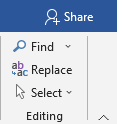
- Find-Button with Drop-Down. The button displays the “Find and Replace” dialog box and displays the Find tab. The drop-down contains the commands: Find and GoTo.
- Replace—This displays the “Find and Replace” dialog box and displays the Replace tab.
- Select-Drop-Down. The drop-down contains the commands: Select All, Select Objects, and Select Text with similar formatting. The Select Text will select text with similar formatting.
Voice
The voice group has a dictation command that lets you speak into your computer and have it turn it into text. Both the desktop version of Word 2019 and the online version (Office 365) have the dictation feature.
Dictate – Lets you use speech-to-text to author content.
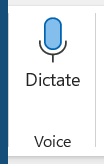
Editor
Editor – Displays the Editor task pane.
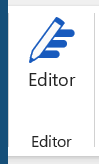
Reuse Files
Reuse Files – Displays the Search task pane.
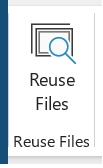
MS Word Home Tab Short Cut Keys
The table shows the commands in home tab and their short cut keys.
| Command | Short Cut Keys |
| Bold | CTRL + B ORCTRL + SHIFT + B |
| Center Para | CTRL + E |
| Copy Format | CTRL + SHIFT + C |
| Distribute Para | CTRL + SHIFT + J |
| Edit Copy | CTRL + CTRL + C ORCTRL + INSERT |
| Edit Cut | CTRL + X ORSHIFT + DEL |
| Edit Find | CTRL + F |
| Edit Go To | CTRL + G ORF5 |
| Edit Paste | CTRL + V OR SHIFT + INSER |
| EDIT PAST SPECIAL | ALT + CTRL + V |
| EDIT REPLACE | CTRL + H |
| Edit Select All | CTRL + A |
| Font Size Select | CTRL + SHIFT + P |
Summary
In summary, we’ve talked about the Home Tab in MS Word as well as what those terms mean, their parts, and their uses. Also, we learn how to use the components of MS Word Ribbon. We also gain insight into why it’s important to familiarize commands with ribbon tabs in creating documents. Furthermore, we also picked up some skills on what the shortcut keys are to hide and show the ribbons if we have a small space on our screen.
We hope this tutorial helps you as you plan to create a document in MS Word.
PREVIOUS

